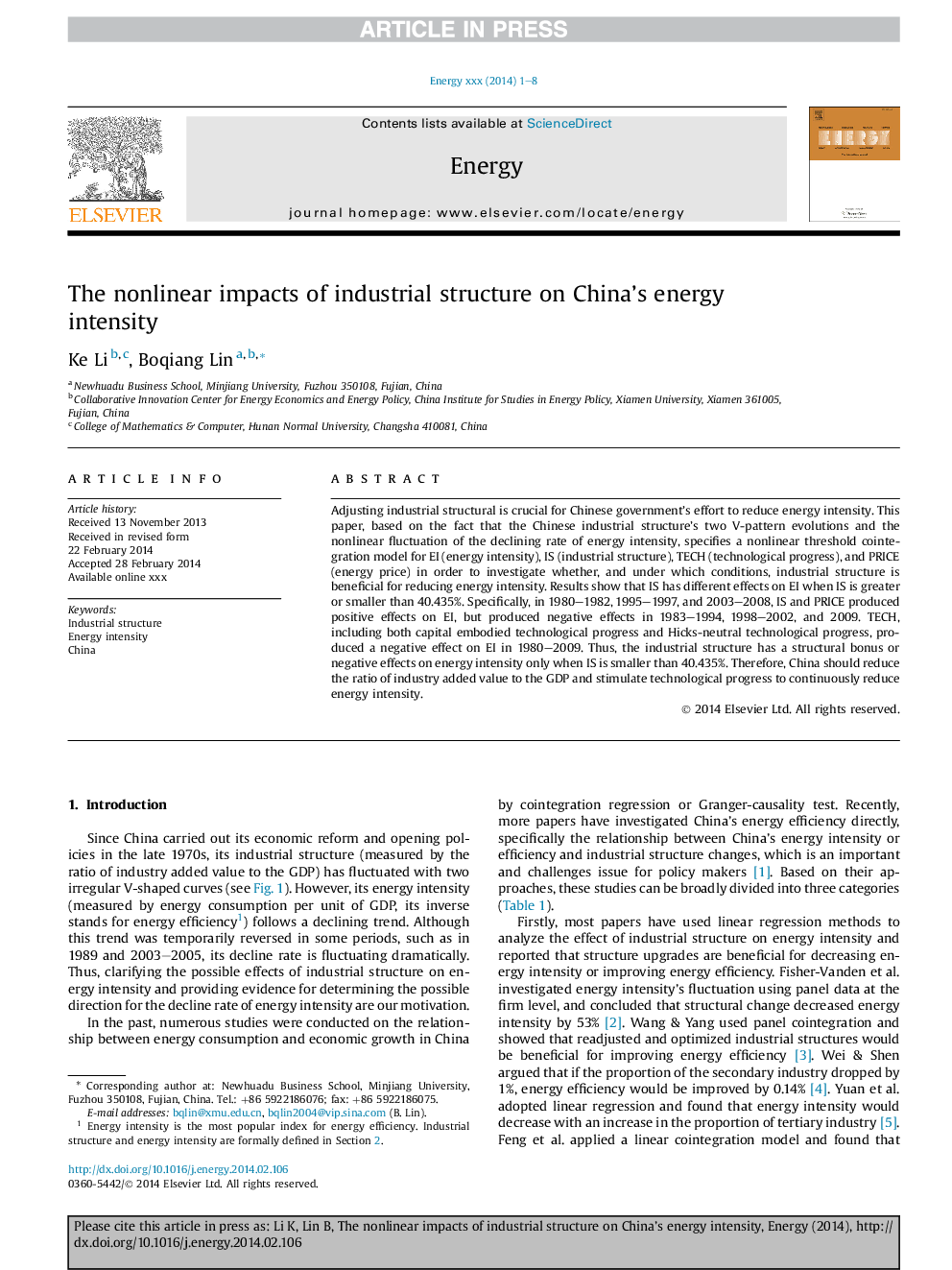| Article ID | Journal | Published Year | Pages | File Type |
|---|---|---|---|---|
| 8077668 | Energy | 2014 | 8 Pages |
Abstract
Adjusting industrial structural is crucial for Chinese government's effort to reduce energy intensity. This paper, based on the fact that the Chinese industrial structure's two V-pattern evolutions and the nonlinear fluctuation of the declining rate of energy intensity, specifies a nonlinear threshold cointegration model for EI (energy intensity), IS (industrial structure), TECH (technological progress), and PRICE (energy price) in order to investigate whether, and under which conditions, industrial structure is beneficial for reducing energy intensity. Results show that IS has different effects on EI when IS is greater or smaller than 40.435%. Specifically, in 1980-1982, 1995-1997, and 2003-2008, IS and PRICE produced positive effects on EI, but produced negative effects in 1983-1994, 1998-2002, and 2009. TECH, including both capital embodied technological progress and Hicks-neutral technological progress, produced a negative effect on EI in 1980-2009. Thus, the industrial structure has a structural bonus or negative effects on energy intensity only when IS is smaller than 40.435%. Therefore, China should reduce the ratio of industry added value to the GDP and stimulate technological progress to continuously reduce energy intensity.
Related Topics
Physical Sciences and Engineering
Energy
Energy (General)
Authors
Ke Li, Boqiang Lin,
